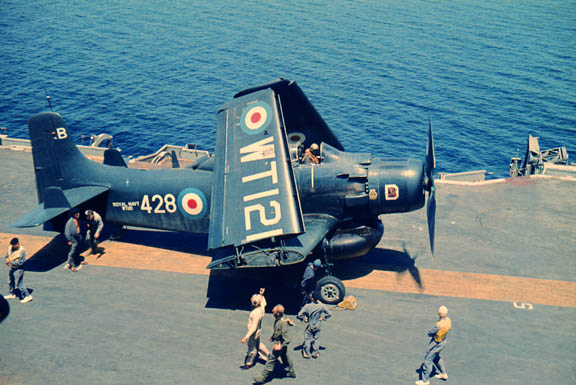
The arrestor wires can be seen across the deck. Counting from aft, the aim is to hook onto number 3. This Guppy looks as if it will catch number 2. Once down it must quickly be unhooked, the hook stowed ( a manual operation on these) and the 'plane taxied to the parking area. There's another in the circuit which can be seen coming in the distance. The round painted area just in front of the Skyraider is the aft lift (elevator) used to move aircraft between the flight deck and the hangar deck.







